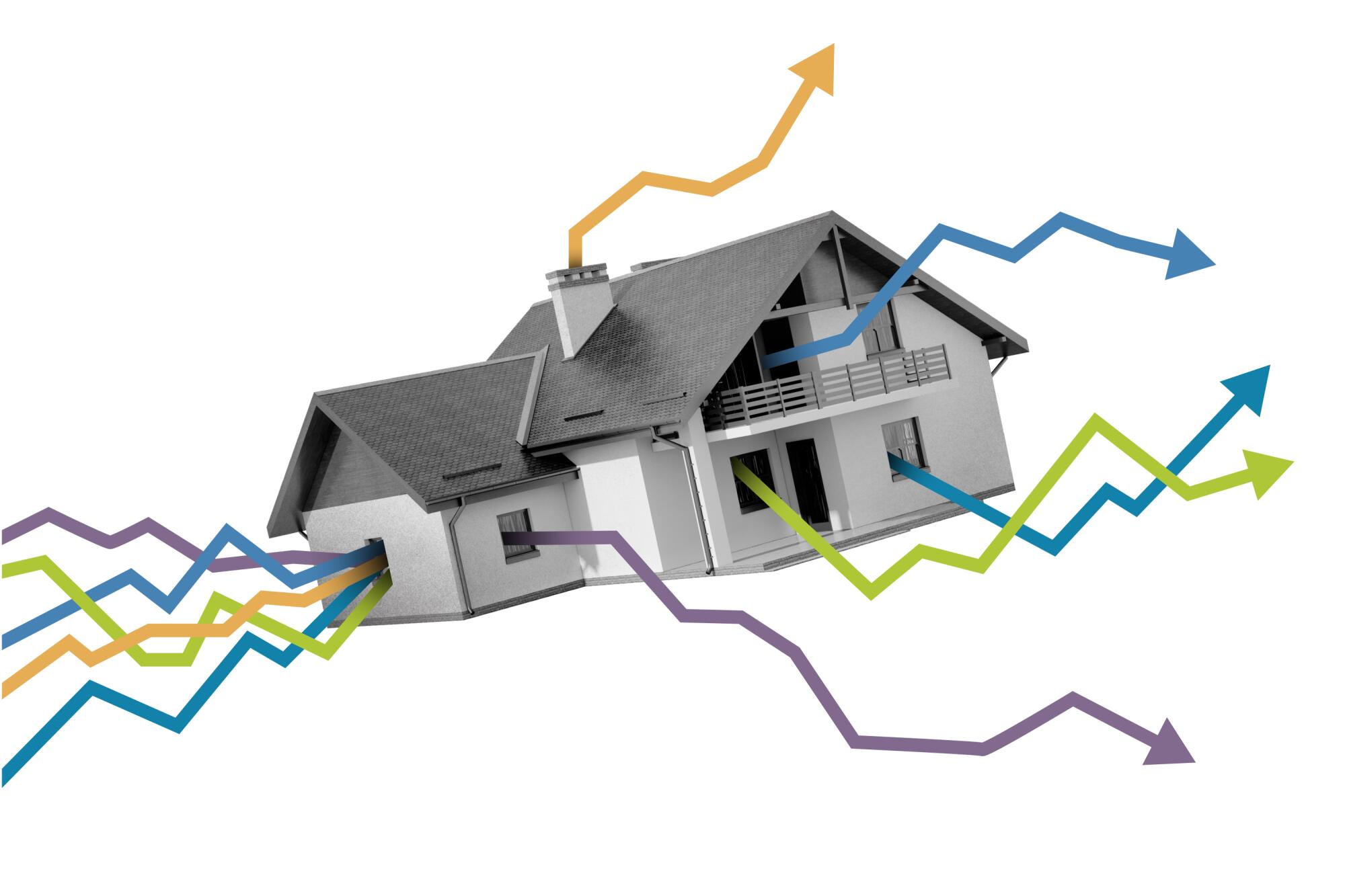
Explore the latest prices for homes and rentals in and around Los Angeles.
- Share via
Southern California home prices fell slightly in January, as high mortgage rates continued to weigh on prospective buyers.
The average home price in the six-county region declined 0.4% from December to $862,115 in January, according to Zillow, marking the sixth consecutive month of declines.
Prices are now 1.9% off their all-time high in July, but some economists say prospective home buyers and sellers shouldn’t expect home values to plunge — one reason behind the shift is the market typically slows in the fall and winter and prices are still above where they were a year ago.
Still, more homes are hitting the market and mortgage interest rates remain high, creating a situation of slightly more supply and slightly less demand.
As a result, annual price growth has slowed. Last month, Southern California home prices were 3.9% higher than a year earlier. In April, prices were 9.5% higher than a year earlier.
Some economists say price growth should slow further this year, or remain flat, but a lack of supply will likely stop values for dropping significantly.
Skylar Olsen, chief economist with Zillow, said the January fires that tore through Los Angeles County could put some additional upward pressure on home prices, because they seriously damaged or destroyed more than 12,000 homes.
At the same time, if the cost of insuring a home rises as a result of the fires, it could cause prospective home buyers to pay less.
For now, Zillow is forecasting home prices in the combined metro area of Los Angeles and Orange counties to be essentially unchanged over the next year, down 0.2% between last month and January 2026.
Housing prices by city and neighborhood
Average home price, in thousands
Zillow Research, Times analysis
Phi Do LOS ANGELES TIMES
Note to readers
Welcome to the Los Angeles Times’ Real Estate Tracker. Every month we will publish a report with data on housing prices, mortgage rates and rental prices. Our reporters will explain what the new data mean for Los Angeles and surrounding areas and help you understand what you can expect to pay for an apartment or house. You can read last month’s real estate breakdown here.
Explore home prices and rents for January
Use the tables below to search for home sale prices and apartment rental prices by city, neighborhood and county.
Rental prices in Southern California
In the last year, asking rents for apartments in many parts of Southern California have ticked down, but January’s L.A. County fires could upend the downward trend.
Experts have said rising vacancy levels had forced landlords to accept less in rent, but the fires wiped away thousands of homes, suddenly thrusting many people into the rental market.
As these people searched for housing, there were widespread reports of illegal price gouging, with some landlords increasing rent by more than 50%.
Authorities have since filed several criminal and civil cases against landlords and real estate agents, and it’s unclear just how much more competitive the larger market will be in the coming months and year.
Most homes destroyed appear to be single-family houses and some experts say they expect the largest increases in rent to be in larger units adjacent to burn areas in Pacific Palisades and Altadena, with upward pressure on costs diminishing as units become smaller and farther away from the disaster zone.
January rent data give an early look into what could be coming.
In Santa Monica, which borders the L.A. city neighborhood of Pacific Palisades, median rent rose 2% from December to reach $2,501 in January, according to data from ApartmentList.
Across the entire city of Los Angeles, which includes the Palisades and many neighborhoods not adjacent to any fire, the median apartment rent dipped 0.15% from December to $2,057.
Rob Warnock, an analyst with ApartmentList, cautioned the company’s data does not include single-family homes and that, even in normal times, rent can bounce around month-to-month.
“I think it’s going to take a couple months to really know if rents are trending differently in the aftermath of the fires,” he said in an email.
More to Read
About this story
Dana Chiueh and Devon Milley contributed to an earlier version of this housing market tracker.
Photo illustration by Jim Cooke / Los Angeles Times; Photo by Getty Images
Sign up for Essential California
The most important California stories and recommendations in your inbox every morning.
You may occasionally receive promotional content from the Los Angeles Times.












